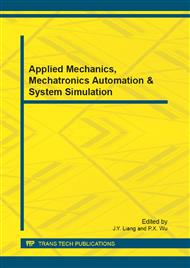p.233
p.238
p.244
p.249
p.256
p.261
p.267
p.273
p.277
Research on the Integrated Cognitive Topological Structure of Driver in the Multi-Resource Information Fusion
Abstract:
According to the comparability between the process of the multi-sensor information fusion and the human information disposal, the psycho-physical factor and its effect on the uncertainties of driving behavior are considered. The psycho-physical integrated cognitive topological structure is researched, and the cognitive activity chain of driving task-centralization is studied in the multi-resource information fusion, as well as discussed the driving decision-making behavior and the running mechanism of vehicle. The aim of researching the driving cooperative mechanism can offer the he theory guidance for the microscopic simulation and the intelligent vehicle development of intelligent transportation systems.
Info:
Periodical:
Pages:
256-260
Citation:
Online since:
September 2012
Authors:
Price:
Сopyright:
© 2012 Trans Tech Publications Ltd. All Rights Reserved
Share:
Citation:


